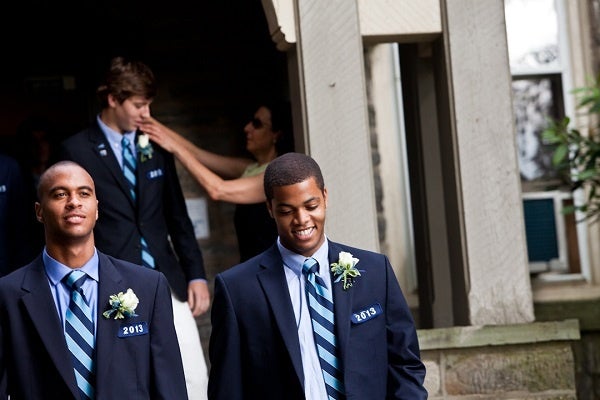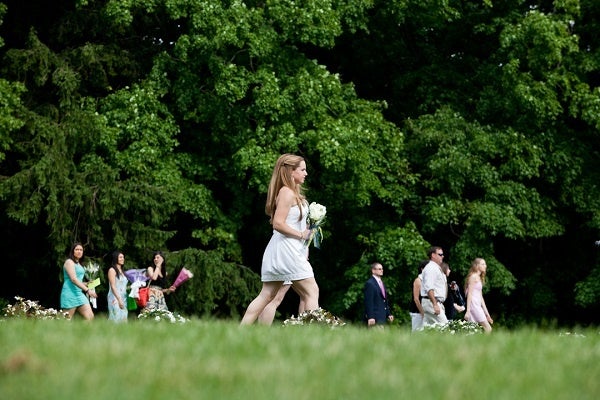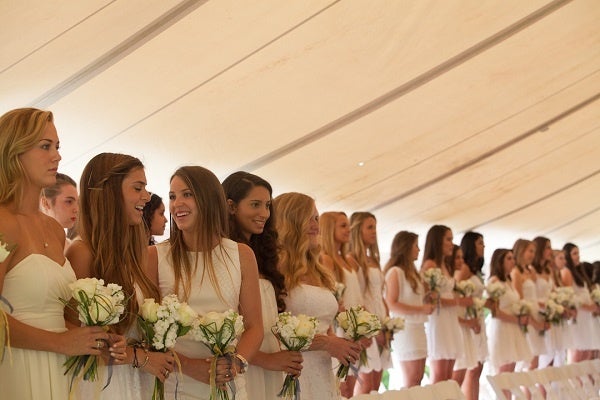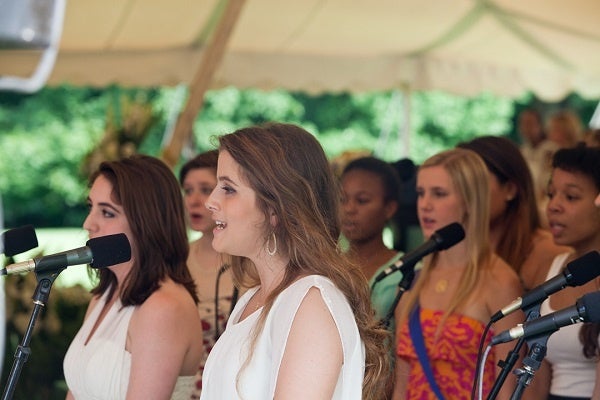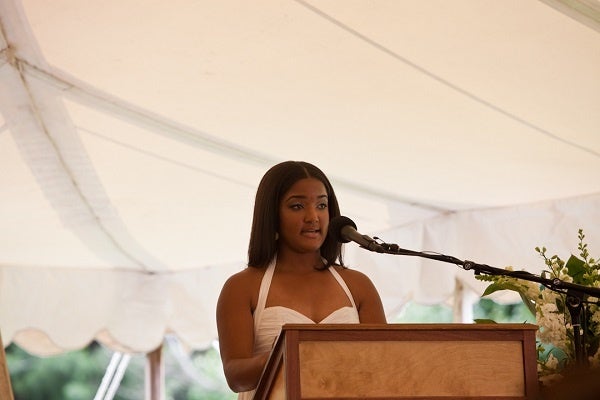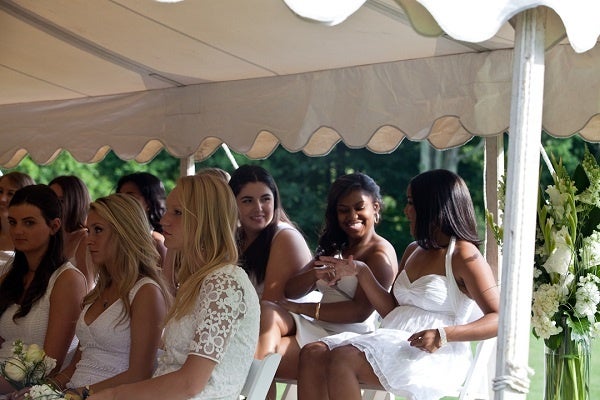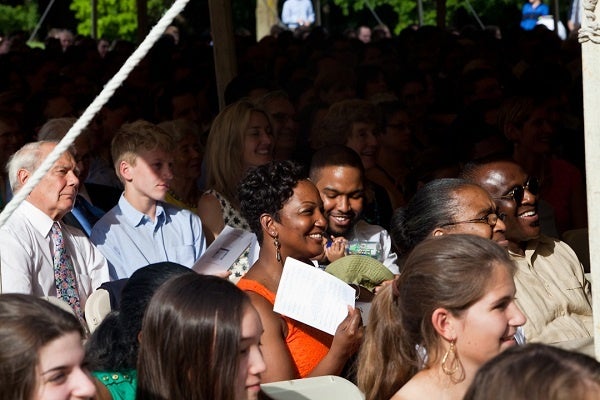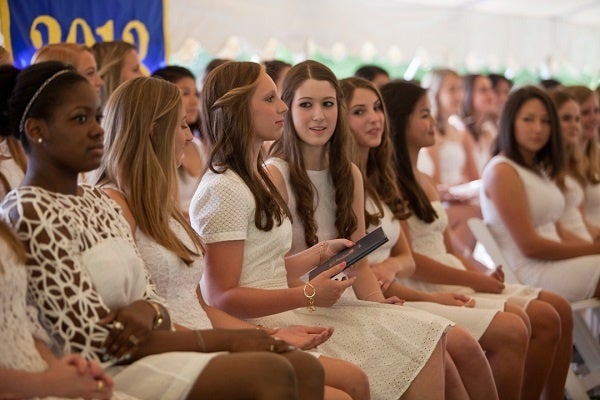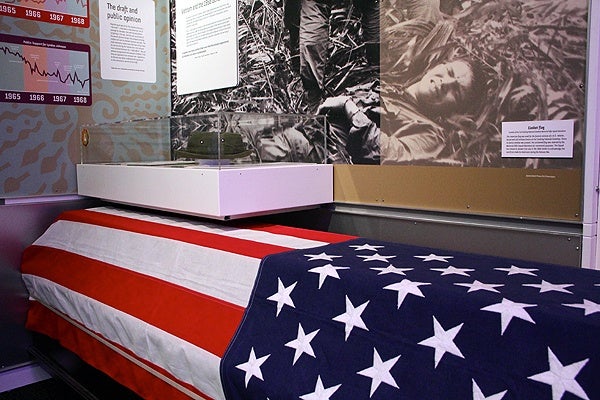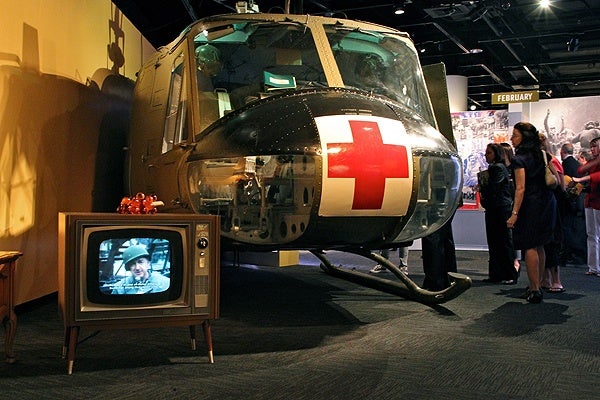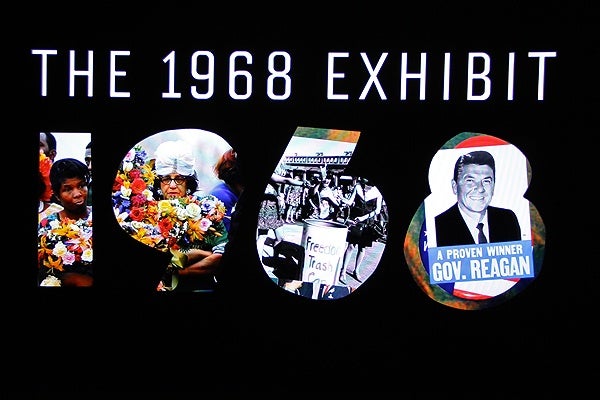From patchwork miniskirts to Huey helicopters, showing all sides of 1968
The National Constitution Center’s new exhibit, The 1968 Exhibit, begins in a tastefully appointed, middle-class living room, with biege mid-century furniture with sea green upholstery facing a television cabinet flickering reports by Walter Cronkite in Vietnam. The rhinoceros in the living room is an actual Huey combat helicopter, dwarfing everything around it. It’s a simple and dramatic museum design, symbolizing the first “living room war.”
As with most houses, the deeper you go inside the messier it gets.
The turning points of 1968 are represented here: the assasinations of Martin Luther King, Jr. and Robert Kennedy; the Tet Offensive; February 11 – 18, the deadliest week of the Vietnam War when 543 Americans died; the election of Richard Nixon; the splashdown of Apollo 8.
The exhibit also features the first Japanese plastic television marketed in the United States; Snoopy calendars; album sleeves for Herb Alpert, Jimi Hendrix, Tammy Wynette; transistor radios; beanbags; patchwork miniskirts.
“There was so much stuff in 1968. It’s kind of a world of stuff,” said curator Brian Horrigan of the Minnesota Historical Society. “This is the year, believe it or not, that the self-storage industry begins. We begin to have so much stuff, our garages and homes are so overflowing with these useless consumer goods, that we have to rent off-site storage.”
Horrigan put together this traveling exhibition in Minneapolis. The National Constitution Center is hosting it for the summer.
The year was a high water mark for civil disobedience, and not just the protests and clashes with police at the Democratic National Convention in Chicago. It was the year a man defended his right to wear profanity on a t-shirt, and a female college student fought back when the administration tried to expel for living with her boyfriend out of wedlock. Taking the Pill was a political act. In the music section, behind glass, are little hand-made spliffs rolled by Horrigan himself, who was 18 in 1968.
It was an exciting time to be young and liberal, which the exhibition gets a little day-glo dizzy with before finding its feet again. Because in 1968 it was just as compelling to be conservative. Tammy Wynette’s “Stand By Your Man” far and away outsold Jimi Hendrix’s “Electric Ladyland,” and America voted Richard Nixon to the White House (while George Wallace garnered more than 13 percent of the vote).
“Recently, and increasingly, people are looking at the 1960s as a decade of reaction,” said Horrigan. “A decade where conservative values surfaced. There was this explosion. A quiet explosion. Richard Nixon stepped up to the concept of a ‘silent majority.’ He didn’t use that phrase, but he was talking about the ‘quiet center’ and ‘the non-shouters,’ as he called them.”
That balance of conservative and liberal forces is what interests Jeffrey Rosen. The new CEO of the National Constitution Center as been on the job for just two weeks, so he had nothing to do with bringing the exhibition to the NCC. He is interested in programming events around the exhibit that highlight some of the constitutional issues raised in 1968 such as limitations on First Amendment free speech rights regarding profanity and inciting violence.
“The Supreme Court handed down the most important decision about stop-and-frisks, defining street stops and NSA surveillance,” said Rosen. “It’s called Terry v. Ohio. The court held that cops can stop you if they have reasonable suspicion that you have committed a crime. They can pat you down if they have specific and articulate-able facts to believe you may be armed and dangerous. That’s hugely important for the 4th amendment that says you don’t need probable cause.”
Rosen, a highly respected constitutional law scholar, was just 4 years old in 1968. Aside from some of the TV shows represented in the exhibit, he has little direct memory of that turbulent year. But at a luncheon to launch the The 1968 Exhibit, where the caterer served Salisbury steak TV dinners as a nod to period authenticity, Rosen felt a stirring.
“I had a Proustian moment,” he said. “The dessert was the very rice pudding with cinnamon on top, which was my favorite childhood dessert. It brough me right back to 1968.”
WHYY is your source for fact-based, in-depth journalism and information. As a nonprofit organization, we rely on financial support from readers like you. Please give today.


